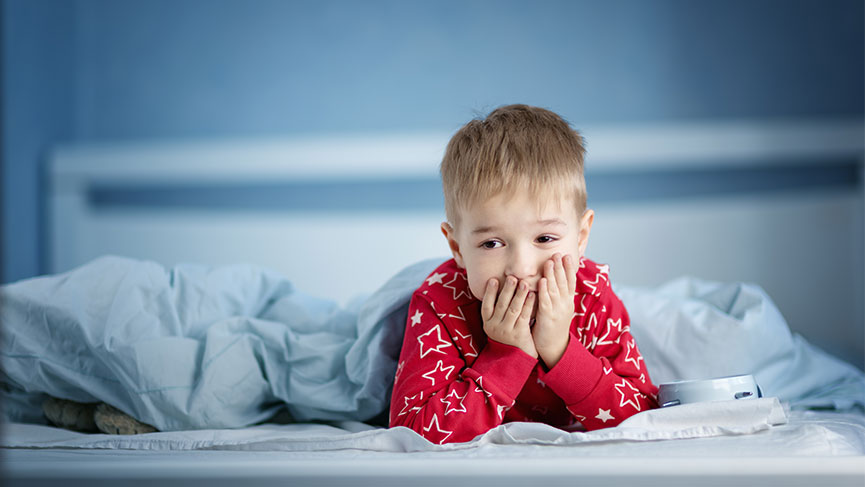- CAUSES OF SLEEP DISORDERS
- EFFECTS OF SLEEP DISORDERS ON CHILDREN
- FOR A REGULAR SLEEP;
- SUGGESTIONS ON IMPROVEMENT OF SLEEPING HABITS
- WHAT IS NIGHT TERROR?
- WHAT IS SLEEP APNES?
- CAUSES OF NIGHTMARE IN CHILDREN?
- WHAT IS SLEEPWALKING ?
 |
| SLEEPWALKING |
Sleep; It has an important place in terms of physical and psychological development of children. While the average sleep time until the age of 2 is 14 hours, after the age of 2 it is 11 to 13 hours on average until the age of 5. The least needed sleep of school-age children is 10-11 hours.
Childhood Sleep Disorders; Difficulty in the transition to sleep may occur in the form of interrupted sleep (inability to maintain it), daytime sleepiness or constant sleepiness.
CAUSES OF SLEEP DISORDERS
Among the causes of insomnia in children; asthma, colic pains, reflux, autism, night feeding, teething, sleep apnea, attention deficit, obesity, hyperactivity disorder, acute upper respiratory tract infections, family problems, difficult temperament in children.
Although sleep problems can occur in different types according to the period, they are often seen in the first 2 years. In the period up to the 5th month, while the sleep is divided due to colic pains and malnutrition; Then there is difficulty in falling and staying asleep intensively.
It should be kept in mind that there may be an important cause or disease in children with this and similar sleep problems. Particular attention should be paid to the problem of sleep interruption or pain awakening from sleep. In such cases, parents should follow their children and consult a specialist physician.
EFFECTS OF SLEEP DISORDERS ON CHILDREN
Childhood Sleep Disorders; It causes physical clumsiness and accidents, behavioral disorders, emotional problems, memory and learning difficulties, and academic problems. Apart from that, they can get irritable and experience sudden mood swings, increasing the potential for depression at a young age or when they reach adulthood.
FOR A REGULAR SLEEP;
The child should have a private room of his own and sleep in his own bed.
Before the child goes to sleep, he can take his favorite toy and blanket, and sing a fairy tale lullaby or a song that the child likes.
It is important that the room is quite calm and dim, and at the same time there are no sounds or images that can attract his attention.
He needs to go to bed and wake up at the same time every day, which will make it easier for him to fall asleep.
At the slightest call, one should not go to him, he should stand just outside the room and talk to him.
When he wakes up at night, you should go to him immediately, make him feel that you are always with him, and trust should be instilled. While doing this, the child should not be taken with him, but should be supported to calm him down and sleep.
SUGGESTIONS ON IMPROVEMENT OF SLEEPING HABITS
It is important that parents agree on this issue, be determined and consistent. The child may not want to go to bed alone or not want to sleep at first. In this process, parents should not act impulsively and should take a self-sacrificing stance without panicking. Children take their parents as role models when it comes to sleep patterns. If the parents sleep late; When the child begins to perceive this, after a while he will also tend to sleep late. The child should be taken to his bed as indicated at the bedtime, and if he resists sleeping, he should wait with him until he falls asleep. Taking a warm bath before going to bed can be an aid for the child to sleep. Spending quality time with the child will play a role in gaining this habit. Apart from these, if he is used to the mother and if this habit has started to deteriorate over time, he may have to apply a different method because it causes anxiety and stress.
WHAT IS NIGHT TERROR?
Night terrors, also known as parasomnia, have an important place in the disorders that we can list among Childhood Sleep Disorders. The symptoms of this disease are characteristic, and each attack leads to a succession of similar responses. The child may suddenly wake up in fear, crying, screaming. As a continuation of this, shouts are replaced by groans and breathing becomes more frequent due to fear, sweating can be seen. For this reason, the child may want to take off his clothes and may want to leave the environment. It usually starts at the age of 18 months and can continue up to the age of 6 years. If he is experiencing this discomfort, it is important to establish a regular sleep routine with the precautions to be taken in his room and at home so that he does not harm himself.
WHAT IS SLEEP APNES?
Sleep apnea is the inability to breathe. Their symptoms; snoring, shortness of breath, obstruction, frequent interruption of sleep. In this context, we can list children's developmental problems as well as bed wetting, behavior problems, learning problems, hyperactivity and daytime napping. All conditions related to respiratory diseases that start from the inside of the nose and generally extend to the inside of the mouth and narrow the airways can cause sleep apnea. In order to prevent it, it is important for sleep apnea to provide weight control, to control allergic disorders, and to detect and control conditions that will affect comfortable breathing, such as adenoids.
CAUSES OF NIGHTMARE IN CHILDREN?
It can be caused by genetic characteristics in children as well as emotional problems such as fear, stress, anxiety, traumas, life changes. According to studies, 13.5% of kindergarten-age children have nightmares at least once a week. However, it is stated that 28% of children aged 5-8, 23% of children aged 9-11 and 10% of children aged 12-14 have nightmares every 6 months. In cases where the frequency increases and exceeds 6 months, it is recommended to seek professional help.
What Is Sleepwalking ?
Sleepwalking, one of the sleep disorders, is most common in childhood. One of the main causes of this disorder, especially seen at the age of 12 and before, was the stress of school and exams as a result of neurological research. In some cases, it has been determined that it continues into adulthood. Sleepwalking can be caused by an underdeveloped central nervous system and fatigue. The child should not be sleep deprived, excessive carbohydrate foods should be avoided at dinner.
SLEEP DISORDERS IN CHILDREN AND TECHNOLOGY
Today, Sleep Disorders in Children and the technology that causes it are undeniably included in our lives. In addition to the conveniences offered by technology such as computers, game consoles, tablets, phones and TVs, which have become more widespread in recent years, health risks have also been proven as a result of studies. It has been observed that the use of technological devices by children in inappropriate times, frequency and different positions causes health problems such as inadequate sleep quality. It has been observed that children who spend a lot of time on social media and have technological devices in the room where they sleep are at high risk for sleep disorders. It has been determined that one of the reasons for the poor sleep quality is related to the fact that they spend more time on the internet before adolescence and the duration of technology use just before sleep.
In addition, the use of technological devices not only at night but also during the daytime affects sleep quality. It causes shorter sleep duration and also prolongation of falling asleep time. Allocating the time that should be reserved for sleep to the use of technological devices causes alarming results in the cognitive and emotional development of children. It is stated that the use of digital technology instead of meeting this need of the body at the time of sleep, delays in cognitive, emotional, linguistic, social and motor development.


0 yorum :
Post a Comment